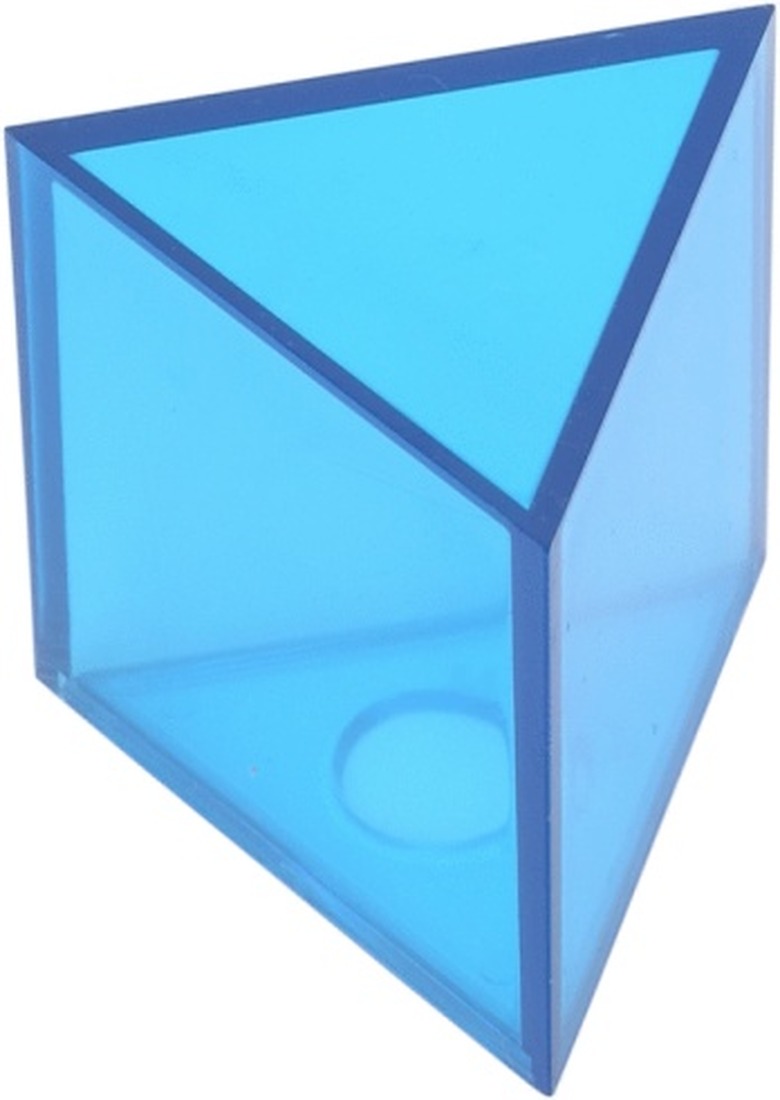How To Find The Surface Area Of A Triangular Prism
To help visualize a triangular prism, imagine a classic camping tent. Prisms are three-dimensional shapes, with two identical polygon ends. These polygon ends dictate the prism's overall shape since a prism is like identical polygons stacked one upon another. The surface area of a prism is just its exterior measurement. Triangular prisms break down surface area calculation into a series of operations. By incorporating a triangle's area and perimeter formulas into the equation surface area = 2 * base triangle's area + triangle's perimeter * prism's height, you can easily calculate the surface area of tents and other triangular prisms.
Step 1
Multiply one of the triangular end's measurements of base and height together. Because the triangular area is going to be doubled, multiplying the base and height together is obtaining double the triangle area. For this example, the base measures 6 and the height measures 5. Multiplying 6 by 5 results in 30.
Step 2
Sum one of the end triangle's sides to obtain the perimeter. In this example, the sides of the triangle measure 6, 4 and 4. Adding those amounts together results in 14.
Step 3
Multiply the perimeter of the triangular end by the prism's height. For this example, the prism's height is 10. Multiplying 14 by 10 results in 140.
Step 4
Add the product of an end's base and height from Step 1 to the product of the height and perimeter from the prior step. For this example, adding 30 to 140 results in 170. The surface area of the triangular prism is 170.
Cite This Article
MLA
Gartneer, Chance E.. "How To Find The Surface Area Of A Triangular Prism" sciencing.com, https://www.sciencing.com/surface-area-triangular-prism-2539/. 24 April 2017.
APA
Gartneer, Chance E.. (2017, April 24). How To Find The Surface Area Of A Triangular Prism. sciencing.com. Retrieved from https://www.sciencing.com/surface-area-triangular-prism-2539/
Chicago
Gartneer, Chance E.. How To Find The Surface Area Of A Triangular Prism last modified March 24, 2022. https://www.sciencing.com/surface-area-triangular-prism-2539/
